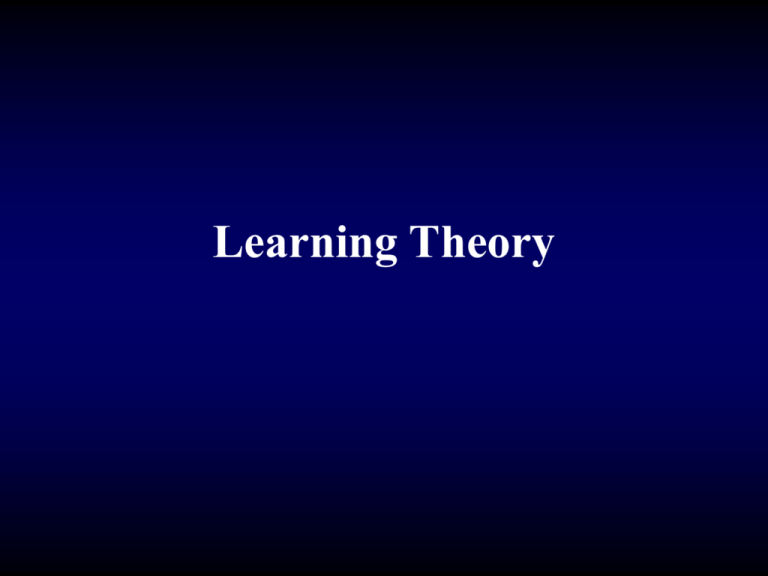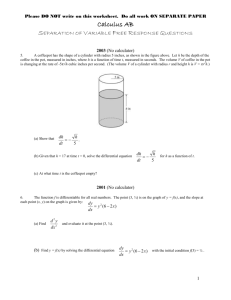Learning and Subcultural Theories
advertisement

Learning Theory Ever Smoked Pot? Yes 69.8% Smoke Pot Almost Every Day? Yes 14.3% What motivates a person to go from the first group to the second? Becker’s View • Because pot is not physically addicting, the motivation to get high must be learned • Getting high takes practice • Users and non-users are fundamentally the same – only differ in what they have learned Necessary Condition, 1 • Learn techniques from others • Direct: instruction from “mentors” • Indirect: watching and imitating • If the proper technique is not learned, use will cease Necessary Condition, 2 • Learn to perceive the drug’s effects • Dizzy, thirsty, intense hunger, light-headed, rubbery legs, warped sense of time, paranoia • Sensations must be connected to the drug • If the user does not learn to connect the sensations to the drug, use will cease Necessary Condition, 3 • Learn to perceive the effects as enjoyable • Could be getting sick, going crazy, or having a great time • If the user does not learn to perceive the effects of the drug as pleasurable, use will cease Conclusion: Motivation is Learned • Motivation is learned in the process of smoking • No need to consider other causes, such as stress, need for escape, low-self esteem • Bottom line: no learning, no motivation, no pot smoking A Life of Crime? • Could you go out tomorrow and start a life of crime? • What kind of crime would get into? • How would you get started? Learning Theory • Deviant behavior is learned in intimate social contexts • Attitudes, values, norms, techniques, and motives • Deviants are the same as everyone else • The difference lies in what they have learned, from whom, and in what contexts Edwin Sutherland’s (1934) Differential Association Theory 1. Deviant behavior is learned… 2. In interaction with other people… 3. Particularly intimate groups (family and peers) Differential Association Theory 4. Learning includes a. Techniques b. Motives/drives c. Attitudes: neutralizations, rationalizations 5. Deviants learn to define the conventional norms as unfavorable The Heart of Differential Association Theory 6. Deviance results from an excess of definitions favorable to norm violations over definitions unfavorable to norm violations (a ratio) Differential Association Theory 7. Differential associations vary in a. Frequency of interaction b. Duration of relationship c. Temporal priority – first come d. Intensity – emotional importance Differential Association Theory 8. Learning deviance is the same as learning anything else 9. Deviant and non-deviant behavior are the result of learned motivations and values Refining Differential Association Theory • Problem with Diff. Assoc. Theory • Learned attitudes -> behavior • Too vague, difficult to measure • Differential Reinforcement Theory (Burgess, Akers) • Behavior is influenced by its consequences • Rewards and punishments determine behavior Distinguishing Features of Diff. Reinforcement Theory • Differential Reinforcement • Lifetime balance of anticipated or actual rewards and punishments -> probability of behavior • Imitation • Explains onset of behavior, but not persistence Summary of Learning Theories • Differential Association Theory (Sutherland) • Deviance results from an excess of definitions favorable to norm violations over definitions unfavorable to norm violations (a ratio), focus on attitudes • Differential Reinforcement Theory (Burgess and Akers) • Deviance results from a lifetime balance of anticipated or actual rewards and punishments that promote deviance (a ratio) • Imitation explains onset, but not persistence






